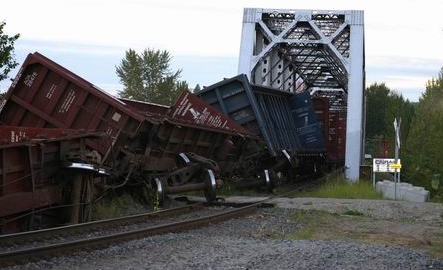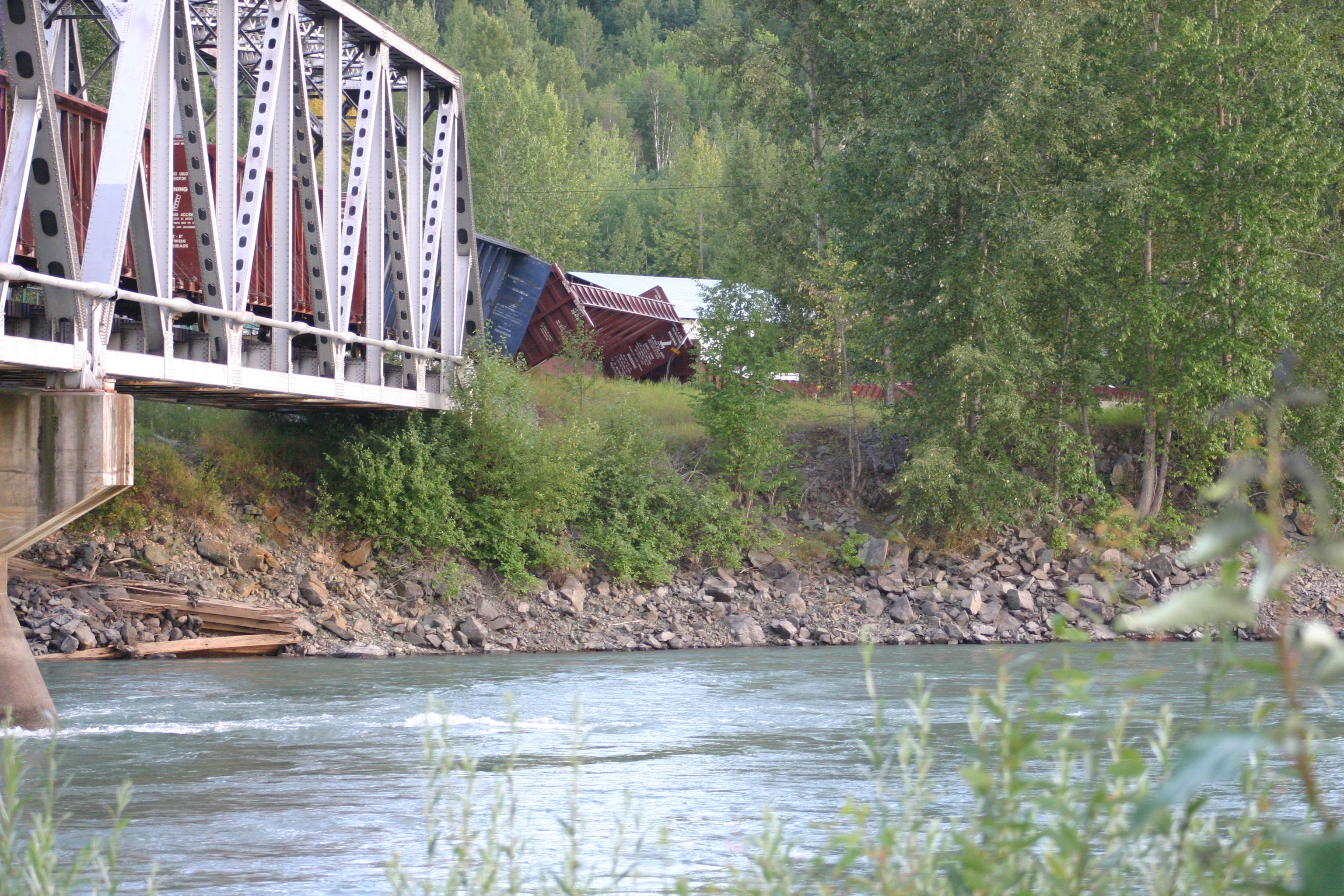CN Has Another Derailment
By 250 News

10 cars off the tracks just before just before the bridge crossing the
CN has another derailment on its hands.
This time, 10 empty rail cars have derailed in the CN yard in Quesnel.
CN spokesperson Kelli Svendsen says there were no injuries, no environmental impact. The derailment occurred about 6:15 this evening and is blocking a public crossing. Svendsen was not able to say what impact if any this incident will have on the regular traffic on the rail line.
There are reports the derailment has caused delays to the Rocky Mountaineer Tourist train which makes a regular stop in Quesnel.
The cause for the derailment is under investigation. No further information is available at this time. (scroll down for more)

(if you look closely, you will see the sign which reads "DERAIL" photo opinion250 staff)
This is the second incident for CN rail in less than a month in the central interior. On August 4th, there was a collision and derailment in Prince George, just 107 km’s north of the scene of the Quesnel incident.
The Prince George incident has already resulted in CN being served with a notice of orders from Transport Canada, and orders from the Provincial Ministry of Environment.
Previous Story - Next Story
Return to Home









